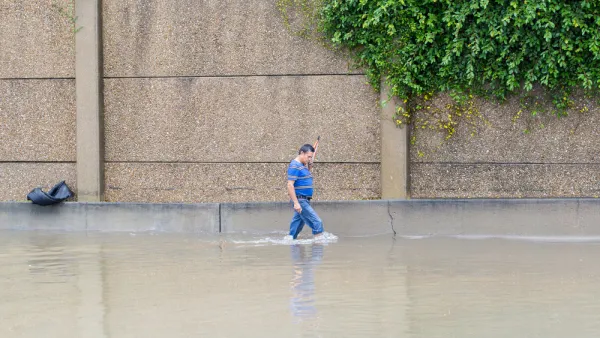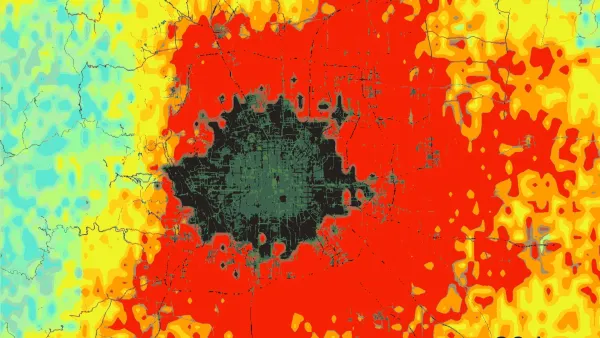Policies that encourage density as a way to reduce carbon emissions won't be able to play a significant role in reducing carbon emissions in time to counteract global warming, according to a new report from the National Academy of Sciences.
The change brought on by rapid densification, urbanization and abandonment of sprawl development patterns by 2050 would not be enough to counteract climate change brought on by carbon dioxide emissions, according to the report.
"Urban planners hoping to help mitigate CO2 emissions by increasing housing density would do better to focus on fuel-efficiency improvements to vehicles, investments in renewable energy, and cap and trade legislation now being voted on in Congress, according to the study, released Tuesday. It concludes that increasing population density in metropolitan areas would yield insignificant CO2 reductions.
Even if 75 percent of all new and replacement housing in America were built at twice the density of current new developments, and those living in the newly constructed housing drove 25 percent less as a result, CO2 emissions from personal travel would decline nationwide by only 8 to 11 percent by 2050, according to the study. If just 25 percent of housing units were developed at such densities and residents drove only 12 percent less as a result, CO2 emissions would be reduced by less than 2 percent by 2050."
FULL STORY: Forget Curbing Suburban Sprawl

National Parks Layoffs Will Cause Communities to Lose Billions
Thousands of essential park workers were laid off this week, just before the busy spring break season.

Retro-silient?: America’s First “Eco-burb,” The Woodlands Turns 50
A master-planned community north of Houston offers lessons on green infrastructure and resilient design, but falls short of its founder’s lofty affordability and walkability goals.

Delivering for America Plan Will Downgrade Mail Service in at Least 49.5 Percent of Zip Codes
Republican and Democrat lawmakers criticize the plan for its disproportionate negative impact on rural communities.

Test News Post 1
This is a summary

Test News Headline 46
Test for the image on the front page.

Balancing Bombs and Butterflies: How the National Guard Protects a Rare Species
The National Guard at Fort Indiantown Gap uses GIS technology and land management strategies to balance military training with conservation efforts, ensuring the survival of the rare eastern regal fritillary butterfly.
Urban Design for Planners 1: Software Tools
This six-course series explores essential urban design concepts using open source software and equips planners with the tools they need to participate fully in the urban design process.
Planning for Universal Design
Learn the tools for implementing Universal Design in planning regulations.
EMC Planning Group, Inc.
Planetizen
Planetizen
Mpact (formerly Rail~Volution)
Great Falls Development Authority, Inc.
HUDs Office of Policy Development and Research
NYU Wagner Graduate School of Public Service





























